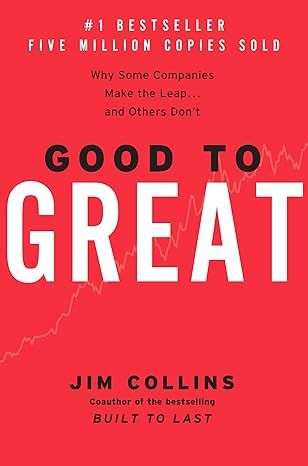Good to Great: Why Some Companies Make the Leap...And Others Don't (Good to Great, 1)
4.5 out of 5
9,099 global ratings
The Challenge:
Built to Last, the defining management study of the nineties, showed how great companies triumph over time and how long-term sustained performance can be engineered into the DNA of an enterprise from the verybeginning.
But what about the company that is not born with great DNA? How can good companies, mediocre companies, even bad companies achieve enduring greatness?
The Study:
For years, this question preyed on the mind of Jim Collins. Are there companies that defy gravity and convert long-term mediocrity or worse into long-term superiority? And if so, what are the universal distinguishing characteristics that cause a company to go from good to great?
The Standards:
Using tough benchmarks, Collins and his research team identified a set of elite companies that made the leap to great results and sustained those results for at least fifteen years. How great? After the leap, the good-to-great companies generated cumulative stock returns that beat the general stock market by an average of seven times in fifteen years, better than twice the results delivered by a composite index of the world's greatest companies, including Coca-Cola, Intel, General Electric, and Merck.
The Comparisons:
The research team contrasted the good-to-great companies with a carefully selected set of comparison companies that failed to make the leap from good to great. What was different? Why did one set of companies become truly great performers while the other set remained only good?
Over five years, the team analyzed the histories of all twenty-eight companies in the study. After sifting through mountains of data and thousands of pages of interviews, Collins and his crew discovered the key determinants of greatness -- why some companies make the leap and others don't.
The Findings:
The findings of the Good to Great study will surprise many readers and shed light on virtually every area of management strategy and practice. The findings include:
Level 5 Leaders: The research team was shocked to discover the type of leadership required to achieve greatness.
The Hedgehog Concept: (Simplicity within the Three Circles): To go from good to great requires transcending the curse of competence.
A Culture of Discipline: When you combine a culture of discipline with an ethic of entrepreneurship, you get the magical alchemy of great results. Technology Accelerators: Good-to-great companies think differently about the role of technology.
The Flywheel and the Doom Loop: Those who launch radical change programs and wrenching restructurings will almost certainly fail to make the leap.
“Some of the key concepts discerned in the study,” comments Jim Collins, "fly in the face of our modern business culture and will, quite frankly, upset some people.”
Perhaps, but who can afford to ignore these findings?
300 pages,
Kindle
Audiobook
Hardcover
Audio CD
First published October 15, 2001
ISBN 9780066620992
About the authors
Jim Collins
Jim Collins is a student and teacher of what makes great companies tick, and a Socratic advisor to leaders in the business and social sectors. Having invested more than a quarter century in rigorous research, he has authored or coauthored a series of books that have sold in total more than 10 million copies worldwide. They include Good to Great, the #1 bestseller, which examines why some companies make the leap and others don’t; the enduring classic Built to Last, which discovers why some companies remain visionary for generations; How the Mighty Fall, which delves into how once-great companies can self-destruct; and Great by Choice, which uncovers the leadership behaviors for thriving in chaos and uncertainty. Jim has also published two monographs that extend the ideas in his primary books: Good to Great and the Social Sectors and Turning the Flywheel.
His most recent publication is BE 2.0 (Beyond Entrepreneurship 2.0), an ambitious upgrade of his very first book; it returns Jim to his original focus on small, entrepreneurial companies and honors his coauthor and mentor Bill Lazier.
Driven by a relentless curiosity, Jim began his research and teaching career on the faculty at the Stanford Graduate School of Business, where he received the Distinguished Teaching Award in 1992. In 1995, he founded a management laboratory in Boulder, Colorado, where he conducts research and engages with CEOs and senior-leadership teams.
In addition to his work in the business sector, Jim has a passion for learning and teaching in the social sectors, including education, healthcare, government, faith-based organizations, social ventures, and cause-driven nonprofits. In 2012 and 2013, he had the honor to serve a two-year appointment as the Class of 1951 Chair for the Study of Leadership at the United States Military Academy at West Point.
Jim holds a bachelor's degree in mathematical sciences and an MBA from Stanford University, and honorary doctoral degrees from the University of Colorado and the Peter F. Drucker Graduate School of Management at Claremont Graduate University. In 2017, Forbes selected Jim as one of the 100 Greatest Living Business Minds.
Read more
Reviews
Nick Rayson
5
... Collins utilized a systematic and technical approach to uncover good to great companies while at the same time providing ...
Reviewed in the United States on May 17, 2016
Verified Purchase
Jim Collins utilized a systematic and technical approach to uncover good to great companies while at the same time providing the reader with an easy to understand explanation of how others failed to make the giant leap. As one follows Collins logic through the build up to breakthrough flywheel, a framework of key concepts emerges illustrating the correlation of specific factors that play a key role in making a company great. The ability of a mediocre company to evolve into a great company requires strict discipline. Good to Great explains in detail how specific disciplines pushed companies to rocket off the charts from the point of their actual transition. A couple of these concepts developed by Jim Collins really stuck out their head as I dug deeper into the book. “Level 5 leaders are a study in duality: modest and willful, humble and fearless”
- Jim Collins
Level five leaders are at the forefront of making a company great. Collins breaks down some assumptions and beliefs about what makes a CEO “great.” All good to great companies had level 5 leaders based on consistent patterns within the research data. He asks the question, “Does it take a larger than life leader that makes more money than you can imagine, to create greatness?” The simple answer is no. Rather, it takes a CEO born from within the company like, Colman Mockler, CEO of Gillete from 1975 to 1991, in order to get the job done for example. Mocklers understated presence as CEO, will to endure, and refusal to cash in when the going gets tough, based on Collins definition, is a level 5 leader. The concept of this level of leadership gives great insight into what current and future mangers of a company should strive to be. “They stick with what they understand and let their abilities, not their egos, determine what they attempt”
- Warren Buffet
Another compelling concept developed while in the process of defining what takes a company from good to great is the Hedgehog Concept. This concept, as Collins describes, is one dependent on asking yourself three, what seem to be simple at first, questions about yourself and your company. What can you be the best in the world at, what drives your economic engine, and what are you deeply passionate about? These questions are known as the three circles. More importantly, the good to great companies analyzed in Collins research, were not the best at anything before hitting their point of transition, but were fully aware of what they could be the best at, and drove hard at their strengths to achieve such greatness. Defining realistic objectives and goals, finding your economic engine, and finding your passion are realized while implementing Collins Hedgehog Concept. Good to Great by Jim Collins is a fascinating read not for its technicality or empirical evidence in justifying what makes a company great, it is fascinating in its simplicity. Stepping back and really taking a disciplined approach to management seems obvious and yet your compelled to read every last word within the book. As I read deeper, it became clearer that the given comparisons of large fortune 500 companies are less about a company being great at one point in time, and more about the timeless principles of discipline that sustain greatness. My personal takeaway from this book is, complacency is the root of mediocrity, and mediocrity slowly kills greatness before it even has a chance to grow. I would recommend Good to Great, by Jim Collins, not only for managers but for anyone that wants to achieve their goals with the help of a proven framework.
Read more
M.Murphy50
5
SO Insightful
Reviewed in the United States on August 2, 2024
Verified Purchase
I have to admit that I was skeptical at first about how a book about big companies moving from good to great would apply to my entrepreneurial endeavor. But, at the recommendation from a business man I greatly admire, I read the book and I am SO glad I did. As I read I started thinking and applying what I was reading to my own enterprise. I believe this book has helped me clarify where I need to focus and the steps to take to build my own great enterprise!
Read more
Magnus
5
enlightening and profound
Reviewed in the United States on September 23, 2024
Verified Purchase
This was my second read of the book and i still cherish every ideas highlighted in the book. Packed in simple anecdotes the ideas are easy to understand, but takes time and energy to apply it
BJHarris
5
GOOD to GREAT...Highly Recommend
Reviewed in the United States on June 7, 2013
Verified Purchase
Jim Collins states in his book, "Good is the enemy of great. And that is one of the key reasons why we have so little that become great...We believe that almost any organization can substantially improve its stature and performance, perhaps even become great, if it conscientiously applies the frame work of ideas we've uncovered." After reading that statement I became very curious and wanting to continue reading to see what are the components that make a good company to be a great company, in hopes of maybe being apply it myself one day I really enjoyed the way in which Collins organized the book. From his five year research study of 28 different companies Good to Great discusses key critical concepts revealed through his studies as to why some companies became successful great companies, while the others continued to be good. Collins found from his research within a great company you will have discipline people, with discipline thought, drives discipline actions. Within each discipline it is broken down into a subset of two components: I. Discipline People a. Level 5 Leadership b. First Who... Then What II. Discipline Thought a. Confront the Brutal facts b. Hedgehog Concepts III. Discipline Action a. Culture of Discipline b. Technology Accelerators I believe by organizing the book in this matter enabled me to really understand the severity of the critical components and how their relationships if applied will in allow a good company to become a great company. Starting with Discipline People, Collins conducted and analyzed his research by introducing the types of leaders you would find in a great company versus those in a just a good company and the characteristics that these great leaders possessed, such as humility and will. They lead with the interest of the company and not for their own selfish reasoning. Next was the First Who ...Then what which discuss getting the right people on board and the wrong people out. Collins states, "People are not your most important assets. The right people are." Collins stresses the importance of first getting the right people in the right places in your company and weeding out the wrong and then figure out where your company wants to go. Next is the Discipline Thought, within the subset of discipline thought a company must possess the ability to confront the brutal facts and not live in denial. Being able to do this will allow the company to stay updated and proactive when faced with making decisions. Collins presented a methodology for the companies to be able to face the truth. He says an organization must lead with questions not answers, engage in dialogue and debate, and use the "red flag mechanism" where anything that is red flagged is information that cannot be ignored and must be handled immediately. Collins also mentioned under the category of discipline thought is the Hedgehog Concept. The Hedgehog Concept is about a Fox and Hedgehog, where the Fox (good companies) knows a lot about variety of things whereas the Hedgehog (great companies) knew a lot about one thing. Being hedgehog is more beneficial for both the company and the individual because it the clarity drives focus and direction whereas the fox has neither one direction nor focus which can backfire later down the road. Lastly, having discipline people with discipline thoughts will drive to discipline action which uses the culture of discipline and technology as another tool to help transform the company from good to great. Collins also refers to the Flywheel Concept. He says that a good to great company never happens all at once it take a lot of effort and time to get it going, like the flywheel. The flywheel requires a lot of pushing to get it to turn and after x amount of time it will begin to gain momentum. Throughout the book Collins gives great examples for each discipline and its component and how it either went from good to great or continued to be good. Along with the examples Collins provides pleather of diagrams and charts in the appendix, which becomes a great reference for the reader and creates a better understanding of what is needed to go from a good company to a great company. Generally the book is a very easy read which makes it that much more interesting to want to apply to your company or even for yourself. It takes the feeling of the impossible away, like Collin stated, "We believe that almost any organization can substantially improve its stature and performance, perhaps even become great, if it conscientiously applies the frame work of ideas we've uncovered." Overall if you are looking to transform your company, Good to Great is a read that I highly recommend.
Read more
14 people found this helpful
Lonnie E. Holder
5
Observations of Good Companies that Transitioned to Great
Reviewed in the United States on September 23, 2004
Verified Purchase
In reading the reviews of this book you will likely think that either this book is a piece of trash, or a road map to being the greatest company on earth. However, this book is neither. What Jim Collins and his staff of researchers did was to analyze 1,435 companies that had appeared in the Fortune 500 to find 11 companies with a specific set of characteristics. A couple of the most key characteristics were that these companies had to have been good performers for a number of years and then gone through a transition phase where they achieved well above industry average in performance sustained for at least 15 years.
Once these 11 companies were chosen along with comparison companies, Jim Collins and his research team looked for common characteristics between these companies. What they believe they found they defined as: having level 5 leadership; having the right people in the company; confronting the brutal facts of their situation; defining what a company is good at; discipline; and the flywheel effect. Collins also discusses the role of technology with an interesting conclusion. While you could likely have guessed some of what they found, Collin's assertion is that a company that has transitioned from good to great and sustained that performance would have each of these characteristics.
What makes this book a great read? The support Collins provides for his conclusions. Collins rigorously assembled facts and then attempted to infer the common factors between the selected companies. While you may argue whether the selected companies will be great in the future, or whether other great companies exist that also made a good to great transition, the fact remains that he and his team did not waver in their criteria and they were able to observe the common characteristics that are described in this book.
The greatest difficulty with the book is that it does not provide a roadmap for any particular company to make the transition. The reader is left to determine how his company might be able to achieve the characteristics of a good-to-great company, or perhaps, how to eliminate the characteristics of a company that would prevent the company from being great, or perhaps even good. One general point of agreement is that each of the defined characteristics is worthy of achieving.
There are a few weaknesses in book. One question that we asked (the leadership team of my company) was whether level 5 leadership could exist with second tier management and not with the top leader. Collins seemed to think that the top leader in the company needed to be a level 5 leader, but we thought that a level 4 leader with a strong level 5 leadership at the second tier could well accomplish the same goal. We also looked at the recent stock market performance of the 11 companies chosen and discovered that more recently some of these companies had performed very poorly. We believe that an effective follow up to this book would be an analysis of companies that went from good to great to good or less than good to see whether a failure in one of the identified factors was the cause of the drop.
This book offers a lot of thought-provoking information. It is a widely-read book because of the methodology Collins used in his data collection. It helps that this book is well-written and a quick read. Neither makes this book a perfect business book, but certainly the conclusions should make us all consider how we can make our companies better. An excellent companion book to "Built to Last."
Read more
23 people found this helpful
Matthew Schlosser
5
Good to Great by Jim Collins
Reviewed in the United States on May 16, 2017
Verified Purchase
Good to Great by Jim Collins is a compelling and informative book about how to be successful, and how to stay successful. The theme of success is shown through 11 companies who start out less or equal to share-market value, then sky rocket to a substantial increase becoming a “great” company, which in terms of Collins, at least three times the market over a consistent span of 15 years. By using a consistent level of market value increase as an indicator for success, the word “Great” used in this book has minimal bias and maximum meaning to the word itself; it’s not just someone’s opinion of just saying, ‘Oh yeah. My company is great!’ This book was written in 2001, so in between then and 2017, there are a few companies that decline from greatness after being written and proclaimed great in this book; I am very interested to see why some of Collins’ companies that were great, turn back into mediocre and bankrupt companies. Although there are some failed companies after being deemed great, the credibility and accuracy of the results found within Collins’ research remain true. This book is very well laid out, divided into easy to follow chapters that flow one right into the other; I found myself reading over 20 pages at a time without noticing until I took a break! Collins establishes the framework of success through three stages known as: disciplined people, disciplined thought, and disciplined action. Within each of these stages comes two key concepts that build off of each other: Level 5 Leadership, First Who Then What, Confront the Brutal Facts, The Hedgehog Concept, Culture of Discipline, and Technology Accelerators. Collins does not shy away from starting off strong in his book, saying “Greatness is not a function of circumstance. Greatness, it turns out, is largely a matter of conscious choice” (pg. 11). I found this quote profound because I believe that in order to make something more than just mediocre, one must be in an above-mediocre mindset. As an Industrial Engineer, I feel the need to have this mindset of greatness, in order to not only make a product, system, or company good, but GREAT. There are multiple layers found within this book where I could relate many of these proposed tools for a great company into using these tools to gauge for a great life. Even if you are not an Industrial Engineer, or any type of engineer for the matter, not an entrepreneur striving for success, not a CEO of a business trying to take a leap of faith into a huge growth of progress, I believe this book is still a GREAT read for any person! There are numerous lessons within this book that can be relatable to not only business, but everyday life. There is a whole chapter dedicated to figuring out who the right people should be going along with a company, then figuring out where to go with the company; First Who Then What. The First Who Then What shows why setting the correct priorities in any situation is important, and can be related to everyday life by knowing who to let into your life that will help you grow, and who to let go of; once you have the right “team” in your life, then you can figure out What you want to accomplish. Once the tools of greatness has been addressed, Collins completes his book by encouraging the reader to find greatness in all parts of one’s life; “As your work moves to greatness, so does your life,” (pg. 210). For these reasons already stated, I would highly recommend others to adapt a culture of discipline (also a main idea from the book) to read and get acquainted with Good to Great and keep their passions and lives GREAT.
Read more
19 people found this helpful
angarcia
4
Good Read, Great insights
Reviewed in the United States on June 1, 2012
Verified Purchase
Jim Collins' "Good to Great" is a national best-seller based on the companies that made the transition from being just good at what they did, to being great at it. Having that said, the title is very self-explanatory. As explained in the book, Collins did not just select companies that had high stocks and were succeeding in the market. No; there was much more than that. Collins and his panel of experts and researchers had specific criterion that companies had to meet in order to be considered a good to great company. Once Collins and his team selected the few good to great companies, each was paired up with another company that never achieved greatness. These pairs allow readers to more easily see mistakes made by the comparison company as well as the positive actions done by the great company. By viewing these comparisons, readers are able clearly see what made the great companies stand above the good ones. Some of the descriptions of companies around today were quite surprising, which kept me intrigued throughout the book. However, Collins uses repetition to stress that points he is trying to make, making his stories seem a bit redundant. The redundancy is only there to help the reader to better picture each situation and the slight variations that occurred between companies.
A few other reviews have mentioned that this book says NOTHING about how to change your company from good to great, and this is absolutely correct. For example, Collins stresses that it is essential to have the right people working for you before you decide where you want to go, but nowhere in this book does it tell you how to do this. "Good to Great" is not a bible that you can simply read that gives you 6 simple steps to a great company; that would simply be too good to be true. The companies mentioned in "Good to Great" took many years to perfect their practice, and each company had to make their own sacrifices along the bumpy road to success. By reading this book, people can gain insight to the qualities and characteristics that great companies have compared to good companies. As mentioned, there are no instructions on how to change; a company must do so on its own. The actions taken by these vary large companies can be used as a parallelism to other companies, either big or small, but results are not guaranteed. With that said, insight can be gained from this book, but it is up to the reader on how to go about using it toward "greatness". One error that I immediately saw in this book came within less than ten pages of reading the book. Some of the companies listed as good to great companies actually went under with the recession of 2008. However, being written in 2001, this data was not erroneous, but that was then. Jim Collins has another book entitled "How the Mighty Fall" which clears up the uncertainty about the so-called "good to great" companies that crashed and burned. By reading this follow up book, I was able to see that Collins had made no error; the great companies had simply slipped away from greatness. The pairing of these two books shows the rise and the fall of the mighty.
Overall, I feel that this book was written in such a way that anyone can read this. There is no need to have a background in business; a little common sense may help here and there. I am an engineering student, and I thoroughly enjoyed this book as well as his follow up book. This book is a must read for anyone moving into upper management and would definitely help anyone who would like to be a part of a major corporation.
Read more

booknosh
4
Somewhere between good and great... though all of Collins's books are starting to blur together a bit...
Reviewed in the United States on January 17, 2015
Verified Purchase
Cut to the Chase: A well-written synopsis of 11 “great” companies and some of their similar characteristics, this is a fun, quick read that is great in terms of party trivia and information… but it’s tougher to judge if you’re looking for more of a business how-to. Partially, it has aged poorly — many of the companies selected have since had meltdowns of epic proportions (for example: Fannie Mae, Circuit City), and the “how to” part of the book feels generalized and far more subjective than the methodology/selection criteria would have you believe. Still, you’ll learn quite a few fun facts about how some of these business started and/or converted to become the giants they are today.
Greater Detail: The main premise of this book is that though there are many very successful, long-lasting corporations out there (Coca Cola, GE, etc), there are a handful of companies that transcend just long-lasting durability, and become truly “great” companies. The selection criteria (mostly explained in the appendices) identified 11 “great” companies out of 1,435 analyzed, mostly via things like stock performance (the companies chosen were at about market average for about 15 years, and then jumped to being about seven times better than market over a period of 15 years, hence the title: good to great).
The idea was to then take a more in-depth look at the 11 companies to see what similarities existed, and to then compile kind of a how-to in terms of what distinguishes the greats. Some of the ideas explored are things like:
-
The Level 5 Leader — Collins proposes the idea of a leadership hierarchy of skills; a Level 5 leader is a dual personality of sorts — someone who is basically modest, but willful and stubborn, almost introverted and shy, but simultaneously fearless (this is kind of the opposite of say the CEO-centric view where Apple was in part defined by Steve Jobs as a leader and a personality, Bill Gates by Microsoft, etc). He argues that the Level 5 leader is someone who does what’s in the best interests of the company — no matter what (preparing for crises before they happen, sacrificing part of their lives often, etc). Counter examples given are leaders who so define the role that they’re unable to appoint successors, or have a successful successor — the argument here is about systematic management, filling the role that the company needs, for the good of the company, and almost without personal ego.
-
The Flywheel and the Doom Loop — Even though the media sometimes portrays changes as though they’re instantaneously effective or immediately impactful, in reality, most companies that are successful slowly build momentum via a flywheel effect, constantly confronting the “brutal” truths and having faith that with discipline and continued effort and momentum, a breakthrough will happen. The Doom Loop is when there is a lack of patience that leads to continued cycles of new leaders, new directions, and new innovations, without ever waiting to see something through.
-
The Hedgehog Concept — This is the concept of doing one thing really, really well. Here the argument is that you don’t have to be the best at everything, that Walgreens became a great company by getting rid of its restaurants (it had over 500 at one point) and focusing on what it was strongest in — being a convenient drug store. It focused on location, location, location (always being on a corner, for example), offering 24-hour pharmacies, flu shots, expanding into poorer neighborhoods, and being an almost pervasively convenient option for its customers. It basically asks companies to think about what they can really be best at and specialize a little, find something they are passionate about that they can truly excel at.
As I’ve said, it’s an interesting read. and in terms of things to make you think, there’s a lot of good cocktail party fodder — is it better to have an invisible leader who sacrifices everything for their company? Or is there benefit to having a targeted leader to focus on (the Zuckerbergs and Jobses, leaders who are synonymous with a company’s image). But if you’re reading it now, more than a decade after its initial publication, it’s hard to take it as seriously when it talks about Fannie Mae (which has gone through a federal takeover/bailout) or Circuit City (which has filed for bankruptcy) or even Wells Fargo, which has had its share of legal and financial troubles. Also, though it’s a nice retroactive, backwards-looking book about what has helped 11 particular companies, it’s hard to know how much is truly applicable going forward. So in that sense, it’s less of a how to go from good to great, and more of an interesting, almost historical read, about how these particular companies made the jump (and then sometimes plummeted back).
Comparisons to Other Books: I had a similar experience with Collins’s Built to Last, which was supposed to detail the successful habits of “visionary” companies. It was a fun synopsis of a six-year research project by Stanford, and I learned all sorts of interesting trivia, but, as with many books that are backwards-looking studies of still-in-business companies, it’s sometimes hard to take the overarching messages seriously knowing how some of the chosen companies have performed since publication. I think these are great books if you’re looking to read something interesting about the business world, but I’m not sure I’d really call them instructive per se.
Read more
44 people found this helpful
Asim Ghaffar
4
Decoding Greatness
Reviewed in the United States on June 19, 2024
Verified Purchase
"Good to Great" by Jim Collins offers timeless insights into what elevates a company from mediocrity to excellence. Despite its publication over two decades ago, the principles it espouses remain relevant, making this book a worthwhile read for anyone interested in business leadership. The hedgehog concept, which emphasizes the importance of focusing on what you can be best at, deeply resonated with me and was a highlight of my reading experience.
Collins artfully combines rigorous research with engaging storytelling, pulling out lessons that are both actionable and profound. Some of the most striking quotes from the book—such as "The good-to-great companies did not focus principally on what to do to become great; they focused equally on what not to do and what to stop doing" and "Greatness is not a function of circumstance. Greatness, it turns out, is largely a matter of conscious choice"—underscore the book’s central message that great achievements stem from deliberate decisions and disciplined people.
While the book might feel a bit dated in some of its examples, the core ideas about disciplined people, thought, and action provide crucial guidance for anyone aiming to transform their organizational culture from good to great. Highly recommended for its clear concepts and transformative insights. A solid 8/10.
Read more
2 people found this helpful
Garry E. McLinn
3
great concepts, needs an update
Reviewed in the United States on February 14, 2024
Verified Purchase
I think the concepts uncovered in Jim’s research are fantastic, but reading about companies like Phillip Morris, Fannie Mae, etc in the context of “good to great” when we know what happened with these companies after the publication of this book makes it feel a little stale. I’m genuinely curious if in today’s market, these concepts translate as directly to success for companies.
That said, there’s a lot of core stuff in here that is applicable to a variety of endeavors, so I do recommend the read.
Read more
3 people found this helpful
Top Jim Collins titles
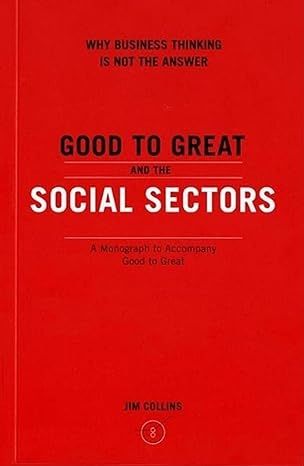
Good to Great and the Social Sectors: A Monograph to Accompany Good to Great (Good to Great, 3)
4.5
-
1,474
$6.00

Turning the Flywheel: A Monograph to Accompany Good to Great
4.6
-
1,230
$0.99
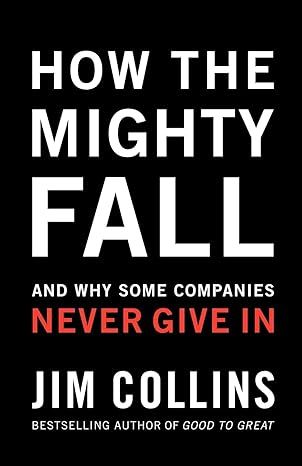
How The Mighty Fall
4.6
-
1,081
$0.99

BE 2.0 (Beyond Entrepreneurship 2.0): Turning Your Business into an Enduring Great Company
4.8
-
803
$0.99

Great by Choice: Uncertainty, Chaos and Luck - Why Some Thrive Despite Them All
4.6
-
1,765
$0.99
Best Sellers

The Tuscan Child
4.2
-
100,022
$8.39

The Thursday Murder Club: A Novel (A Thursday Murder Club Mystery)
4.3
-
155,575
$6.33
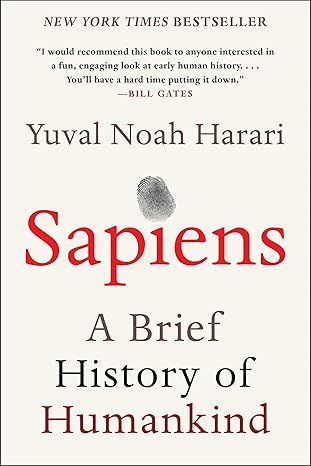
Sapiens: A Brief History of Humankind
4.6
-
140,302
$13.49

The Butterfly Garden (The Collector, 1)
4.3
-
88,556
$9.59

Things We Hide from the Light (Knockemout Series, 2)
4.4
-
94,890
$11.66

The Last Thing He Told Me: A Novel
4.3
-
154,085
$2.99

The Perfect Marriage: A Completely Gripping Psychological Suspense
4.3
-
143,196
$9.47
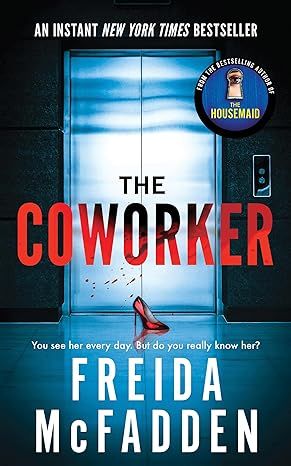
The Coworker
4.1
-
80,003
$13.48

First Lie Wins: A Novel (Random House Large Print)
4.3
-
54,062
$14.99

Mile High (Windy City Series Book 1)
4.4
-
59,745
$16.19

Layla
4.2
-
107,613
$8.99

The Locked Door
4.4
-
94,673
$8.53
